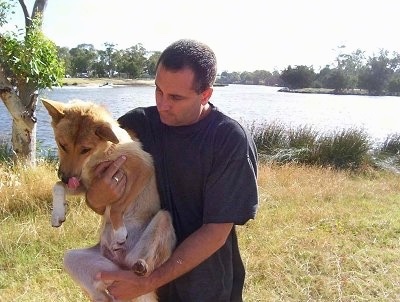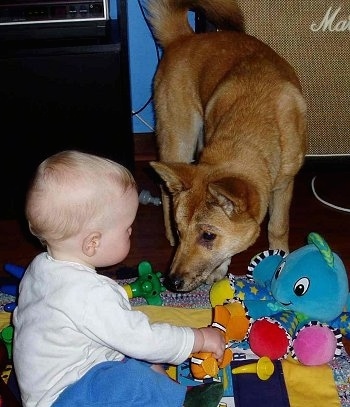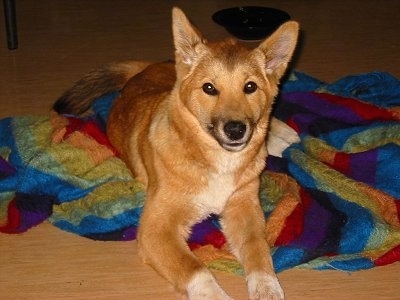
Photo taken by Jamie Sciban
Lindy is one year old; I paid $850 (Australian) for her when she was 3 weeks old. I bought her from a Dingo farm. Dingoes come in shades of red, black and white. Lindy’s colour is red; she is originally from the desert region of Australia. Her coat is very soft and everyone comments on the softness of the coat.
The Dingo is the oldest pure form of dog in the world, and all other dogs stem from the strain. However, they have no dewclaws (an inner toe found on some dogs). The blood strain that Lindy comes from is pure and stems back some 15,000 years; extensive DNA tests have been carried out on her family tree.
Every Monday a personal trainer puts Lindy through obedience and discipline lessons. She is well mannered and intelligent. During the training sessions, there is a film crew from Foxtel/Discovery Channel making a film about Dingoes and the training of dingoes as pets. The purpose of making the film is to show people that, like any breed of dog when given love and attention by responsible owners, Dingoes make wonderful pets. Laws vary in different states—some ban ownership, some allow ownership, and some require permits. It is my hope that the film will create an interest for all states to have the same law: allowing the Dingo to be domesticated as a pet, like any breed of dog. This will help to keep the pure strain.
Dingoes don’t bark so Lindy is very quiet. She gets along with our two dogs and they are the best of friends. Dingoes are not fond of playing in water. While the dogs love to plunge into the river and swim, Lindy will go in only chest high. However, she loves to run, play and surge through the mass of wild reeds and bulrushes near the house. She has to be washed every two weeks—not her favourite experience, but she is getting used to it.

Lindy has a wonderfully warm and friendly disposition. She almost smiles when she sees anyone coming toward her; her tail wags and she screws up her face until her forehead wrinkles! She is funny to watch. As a Dingo, she has a few natural traits, like: trying to bury food under pillows and cushions around the house.

Lindy sleeps at the end of my bed and snores! She also dreams and her legs will go at full pace during a very active dream.
She likes being up high and enjoys climbing onto the roof—just like how Dingoes in the wild will watch the world go by from a cliff face.
Lindy could live up to 25 years. In Melbourne, Dingoes are being trained as guide dogs (for blind people) because of their good nature, intelligence and long life.
Her favourite food is smoked pork bones and chicken meat. We never buy tinned food, and spoil her with prime cuts of porterhouse and T-bone steaks. The shine in her coat makes it quite obvious that she is a healthy dog.
Lindy has yearly vaccinations against heartworm, roundworm, distemper and kennel cough, along with monthly worm tablets.
Dingoes are very clean animals and do not have a “dog smell.” They don’t jump on people like some dogs, yet they show loyalty, respect and admiration for their owners.
My days are spent with this beautiful animal and she has made life more enjoyable. She really is a wonderful pet dog!